My Gal Sal

Brief Synopsis
Cast & Crew
Irving Cummings
Rita Hayworth
Victor Mature
John Sutton
Carole Landis
James Gleason
Film Details
Technical Specs

Synopsis
In the late 1800's, ambitious Paul Dreiser runs away from his Indiana home, leaving behind his mother, father and younger brother Theodore. Paul does not want to study for the ministry, as his father desires, and instead wants to be a musician. His first foray as an entertainer ends disastrously when Corbin, a con man, uses Paul, who has changed his surname to Dresser, as a front while selling fake jewelry. The angry townspeople catch Paul after Corbin disappears, and tar and feather him. Paul is then found and nursed by Mae Collins, a common but good-hearted singer in Colonel Truckee's Kickapoo Indian Remedy Extravaganza. Once Paul recovers from his ordeal, he joins the medicine show and reciprocates Mae's affections. Paul is thrilled by the appreciative crowds and the easy money, which allows him to buy many loud suits. One evening, as Paul is performing, a group of high-class entertainers from New York City, led by singer Sally Elliott and her producer, Fred Haviland, laugh at Paul's cheap clothes and exuberant performance. Sally likes one of Paul's melodies, however, and invites him to see her show. Paul and Mae go to New York, and although Paul laughs at Sally for revenge, he is impressed by the quality of her show. Determined to better himself and never be laughed at again, Paul leaves Mae and the medicine show for New York. Upon his arrival, Paul learns from music publisher Pat Howley that Sally wrote lyrics to accompany his melody and has included the song in her new show. Despite his anger, Paul listens to Pat's advice that an association with Sally would be good publicity. Paul soon writes a string of hit songs that Pat publishes and Sally sings in her shows. Fred, who is in love with Sally, is forced to step aside as Paul pursues her. Paul's success goes to his head, however, and he pays little attention to Sally and his songwriting in order to go out with his new group of society friends. Sally is especially concerned about the married Countess Mariana Rossini, and is furious to learn that Paul is to go with her on a cruise. Sally cuts up all of Paul's clothes, and he is arrested when he destroys her wardrobe. The couple reconciles after his release from jail, and Sally accepts Paul's marriage proposal. Later that night, however, Paul is tricked into going to Mariana's house, where she convinces him to stay for a night of innocent, if drunken, revelry. When Sally sees the countess dropping Paul off at his hotel in the morning, she assumes the worst and refuses to see him. She goes on tour with Fred, and as the weeks pass, Paul writes nothing but flops. Finally, music broker Wiley tricks Sally into accepting Paul's new song, "My Gal Sal," by claiming that an unknown Southern composer wrote it. The song is a huge hit, and soon after its debut, Sally and Paul are reunited.

Director
Irving Cummings
Cast

Rita Hayworth

Victor Mature
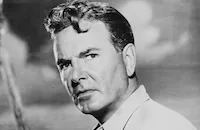
John Sutton

Carole Landis

James Gleason

Phil Silvers

Walter Catlett

Mona Maris
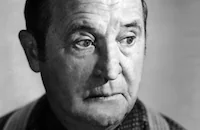
Frank Orth
Stanley Andrews
Margaret Moffat
Libby Taylor
John Kelly

Curt Bois
Hermes Pan

Gregory Gaye
Andrew Tombes
Albert Conti
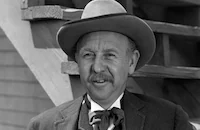
Charles Arnt
Chief Thundercloud
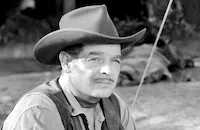
Robert Lowery
Dorothy Dearing
Ted North
Roseanne Murray
Harry Strang
Billy Wayne
Edward Mcnamara
Ed Dearing
Rosina Galli
Larry Wheat
Eddy Waller
Judy Ford
Barry Downing
Tommy Seidel

Billy Curtis
Tommy Cotton
Paul Burns
George Melford
Charles Tannen
Clarence Badger Jr.
Kenneth Rundquist
Delos Jewkes
Gene Ramey
William Halligan
Joe Downing
Bill Hazlett
Iron Eyes Cody
J. W. Cody
William P. Wilkerson
Milt Kibbee
Luke Cosgrave
Ernie Adams
Joe Bernard
John "skins" Miller
Gus Glassmire
Tom O'grady
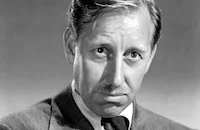
Frank Ferguson
Cyril Ring
Pearlie May Norton
Mary Stewart
Vanita Wade
Tom Ladd
Perk Lazelle
Bud Lawler
James Nataro
Bud Carpenter
John Coffey
Jack Barnett
Paul Foltz
Eddie Cutler
Sol Haines
Russell Ash
Jack Boyle
Tex Brodus
Bob Crosby
Ralph Hubbard
Dona La Barr
Peggy Neary
Charles Owens
John Roche
John Stanley
Valerie Traxler
Louise Allen
Mary Carroll
Grace Davies
Virginia Davis
Chuck De Shon
Jack Frost
Edith Haskins
Jack Jackson
Roger Miller
Byron Poindexter
Belle Richards
Ruth Riley
Jack Ross
Eddie Searles
Nondas Wayne
Dan Wyler
Eugene Morgan
Aileen Haley
Joe Hickey
Bill Alcorn
Matt Duffin
Crew
Robert Bassler
Alfred Bruzlin
Harry Dacre
Richard Day
Theodore Dreiser
Paul Dresser
Roger Heman
Henri Jaffa
Natalie Kalmus
William Koenig
Thomas Little
Seton I. Miller
Alfred Newman
Ernest Palmer
Hermes Pan
Guy Pearce
Ralph Rainger
Val Raset
Helen Richardson
Leo Robin
Robert Simpson
Karl Tunberg
Gwen Wakeling
Darrell Ware
Henry Weinberger
Joseph C. Wright
Nan Wynn
Darryl F. Zanuck

Videos
Movie Clip


Hosted Intro
Film Details
Technical Specs

Award Wins
Best Art Direction
Award Nominations
Best Score
Articles
My Gal Sal (1942) - My Gal Sal
My Gal Sal is a highly fictionalized biopic of Gay-Nineties-era songwriter Paul Dresser (1857-1906), the brother of celebrated novelist Theodore Dreiser (An American Tragedy, Sister Carrie). Dreiser gets screen credit for the movie's story, and Fox publicists claimed it was adapted from the writer's biographical essay, My Brother Paul, part of his 1919 collection Twelve Men. Truth is the screenplay was created with considerable dramatic license by Seton I. Miller, Darrell Ware and Karl Tunberg from an unpublished manuscript by Dreiser and his wife, Helen Richardson. Theodore is played briefly in the film by child actor Barry Downing.
Victor Mature, then one of Fox's most popular leading men, plays Dresser, a corpulent fellow who weighed almost 300 pounds and whose bulky shape bore little resemblance to Mature's athletic image as the movies' first "hunk." My Gal Sal takes Dresser from his Indiana home to New York, where he becomes the toast of Tin Pan Alley and enters into a tumultuous love-hate relationship with the fictional Sally Elliott (Hayworth), supposedly a leading musical star of the day.
In reality the "Sal" of the title was likely based on Annie Brace, proprietor of a leading brothel in Evansville, Indiana, who was known professionally as Sallie Walker. According to some historians, she and the colorful Dresser - whose appetites reportedly were as large as his frame - had a love affair that lasted for many years until she became resentful of his relationships with other women, usually prostitutes.
Dresser songs included in the film, in addition to the title tune, include another of his big hits, "On the Banks of the Wabash," as well as "I'se Your Honey If You Wants Me, Liza Jane," "Come Tell Me What's Your Answer" and "Mr. Volunteer." Studio songwriters Leo Robin and Ralph Rainger contribute "Me and My Fella," "Oh, the Pity of It All," "Here You Are," "Me and My Fella and a Big Umbrella" and "On the Gay White Way." An extended dance sequence in the latter number marked the only time that celebrated choreographer Hermes Pan (who staged the film's dances) partnered Hayworth onscreen.
Trained to be a dancer from childhood, Hayworth moves through her movie musicals with dazzling confidence (Fred Astaire named her as his favorite dancing partner). But her singing was always dubbed - in this instance, by Nan Wynn, who also sang for the beautiful redhead in The Strawberry Blonde (1941) and You Were Never Lovelier. Mature was routinely dubbed in musicals, including this one, by Ben Gage, then the husband of Esther Williams.
Hayworth's role was originally intended for leading Fox musical star Alice Faye, who had to turn it down because she was pregnant. Betty Grable was next in line but was feeling overworked (and perhaps tired of taking Faye's leftovers), so she refused the part.
Carole Landis, who plays the second female lead in My Gal Sal, had also been considered for the role of Sal. Ironically, Landis also had been the original choice to play Hayworth's attention-getting role in Blood and Sand. Some reports had Landis dropping out of that role because she didn't want to dye her blonde hair red; others blamed the breakup of an affair with Fox studio head Darryl F. Zanuck.
Hayworth biographers Joe Morella and Edward Z. Epstein quote an unidentified makeup person at Fox at the time as saying, "Carole was ready to pull Rita's hair out, even though Hayworth had had nothing to do with Landis's ill-advised move not to do Blood and Sand. But Rita was not a bitch, and that defused Landis. There were no further problems between them."
Also in the supporting cast are James Sutton as Sal's would-be suitor and James Gleason as Dresser's agent. Phil Silvers, who has a small role here, became a close personal friend of Hayworth and would later costar with her and Gene Kelly in Cover Girl (1944). Silvers adored Hayworth, and they shared a ribald sense of humor. He remembered later that "She'd wait for me to come onto the set...and I'd tell her the spiciest stories I knew. She loved it."
Shot in the typically lush 20th Century Fox Technicolor by Ernest Palmer, the candy-colored My Gal Sal is a treat for the eyes, with Hayworth looking gorgeous in Gwen Wakeling's elaborate Gay Nineties costumes. Irving Cummings, a versatile director whose other Fox musicals would include Sweet Rosie O'Grady (1943) and The Dolly Sisters (1945), keeps the thin plot moving between the elaborate musical numbers. The movie won an Oscar® for its Art Direction/Interior Decoration by Richard Day, Joseph C. Wright and Thomas Little; and was nominated for another for Alfred Newman's Scoring of a Musical Picture.
Hayworth and Mature, who had met when she had reported to Fox for work on Blood and Sand a year earlier, began a love affair while filming My Gal Sal. Both were married but separated from their spouses, and Hollywood's new "dream team" was expected to wed once their divorces came through. Mature, however, was called into service by the Coast Guard and, while he was serving, Hayworth surprised everyone by marrying Orson Welles (in 1943). Mature said later that he had fully expected to marry the beautiful star and was "shocked, surprised and grieved" when he learned that she had become Welles' bride.
by Roger Fristoe

My Gal Sal (1942) - My Gal Sal
Quotes
Trivia
Notes
The film's opening title cards read: "Twentieth Century-Fox presents Rita Hayworth, Victor Mature, John Sutton, Carole Landis in Theodore Dreiser's My Gal Sal." The film is based loosely on the life of Paul Dresser, the older brother of writer Theodore Dreiser. Dresser, who was born Paul Dreiser in Terre Haute, Indiana on April 2, 1857, wrote more than 400 songs in his lifetime and was a popular performer in musical comedies. He died on January 30, 1906 from heart disease. Pat Howley and Fred Haviland were Dresser's partners in a music publishing company.
According to the Twentieth Century-Fox Records of the Legal Department, located at the UCLA Arts-Special Collections Library, the studio purchased from Dreiser the rights to the story of Dresser's life and sixty of his songs for $35,000. The legal files also note that the studio purchased from Dreiser and his wife, Helen Richardson, an "original, unpublished, uncopyrighted" story about Dresser, which was used as the basis of the final screenplay. Although a March 5, 1941 Hollywood Reporter news item stated that Dreiser had published a biography of his brother entitled My Gal Sal, Dreiser did not write such a book. The legal records indicate that Eugene Thackrey worked on an early draft of the screenplay, and March 1941 Hollywood Reporter news items noted that Sam Hellman had been assigned to work on their screenplay. The extent of their contributions to the completed film has not been determined.
A March 5, 1941 Daily Variety news item indicates that Columbia and RKO were initially interested in the project, but "sales were stymied in both cases by Dreiser's asking price." According to Hollywood Reporter news items, Twentieth Century-Fox purchased the story as a vehicle for Alice Faye, and Fritz Lang was originally assigned to direct the picture, with first Fred Kohlmar and then Robert T. Kane assigned to produce. Studio press releases noted that Faye was replaced by Rita Hayworth, who was borrowed from Columbia for the production, when Faye temporarily retired from the screen to have a baby. Lang was taken off the project in order to direct Moontide. (Moontide was ultimately directed by Archie Mayo, however.) Co-stars for Faye, announced in Hollywood Reporter news items, included George Montgomery and Don Ameche. A December 15, 1941 Hollywood Reporter news item stated that Ameche was replaced by Victor Mature because "the studio decided it might not be good box-office to have Ameche play a composer again after having played Stephen Foster in Swanee River a few years ago." According to studio records, Stuart Erwin was originally assigned the role of "Pat Howley," and Jonathan Hale was signed to play "Mr. Dreiser."
According to information in the MPAA/PCA Collection at the AMPAS Library, the film's December 22, 1941 screenplay was rejected by the PCA because "the lead, Paul, has indulged in various sex affairs without the proper compensating moral values." The PCA warned the studio that it was "essential that the present characterization of Paul be changed from that of a man who frequently indulges in sex affairs." A later version of the screenplay was approved by the PCA. According to the legal records, the studio prepared a one-reel short entitled Movie Going Millions to advertise My Gal Sal and three other Twentieth Century-Fox productions: This Above All, Moontide and Ten Gentlemen from West Point. My Gal Sal won an Academy Award for Achievement in Art Direction. For his work on the film, Alfred Newman received an Academy Award nomination for Achievement in Music (Scoring of a Musical Picture), but lost to Max Steiner and Heinz Roemheld (Yankee Doodle Dandy). On January 18, 1943, Mary Martin and Dick Powell starred in a Lux Radio Theatre version of My Gal Sal.















